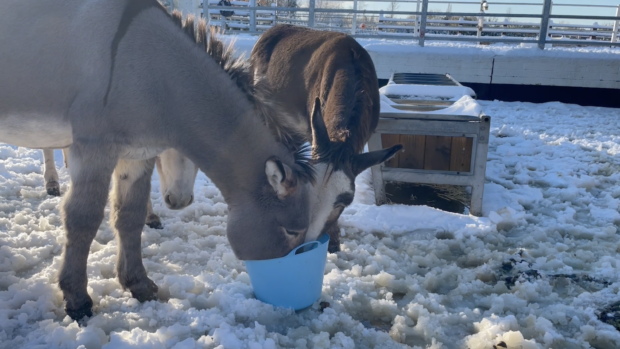For many competition horses, the main season is coming to an end as the leaves turn and the mornings start with a hint of frost. If hunting isn’t on the cards, that means a well-earned break. H&H looks at making a smooth transition from full work to field time
Although the most keen amongst us can find competitions year round now, many people give their horses a break at the end of the traditional competition season. There are lots of benefits, both physical and mental, to giving horses some ‘down time’ — so how is the move from hard work to holiday time best managed?
What is the reason for your horse’s break?
Former event rider John Thelwall now coaches following a diverse riding career which also included showjumping and racing. He advises treating each horse as individual when deciding how to manage time out.
“Roughing off a competition horse is very different from turning hunters out in the spring, where you allow them to have the best of the grass and then need four weeks of walking to rid them of the excessive amount of fat they have gained. When it comes to giving a competition horse a break, you must first consider the reason for the break before settling on your course of action.
“For example, if there is an injury, however small, the treatment for this problem must take priority. This will dictate what you can and cannot do before turning him out for a complete break,” says John.
Showjumper and coach Faye Raw had this scenario with her Grade C horse, Un Fils De Fuego.
“We had planned to give him a break anyway last autumn, but then he picked up a minor injury so he had an extended rest. My husband, Paul, is a farrier and he advised taking off his shoes to give his hooves a recovery period at the same time,” says Faye.
“Fuego was still coming in at night, and I was cautious about putting him out during very bad weather so he had some days when he was walked in hand or given some light groundwork in the arena. But he pretty much had a proper break with shoes off and a fluffy coat.
Generally, however, Faye’s horses get a break in December and January when they go onto light hacking duties.
“We don’t turn them away fully, partly because until recently I had limited turnout and we kept them in light hacking to give them a leg stretch. All the field injury problems we’ve had have been during the winter in very wet, muddy conditions so I restrict turnout now when the ground is poor.
“The horses get a break away from schooling and competing, though. We reduce their hard feed accordingly, with ‘hotter’ horses going onto just fibre cubes and a gastric supplement,” says Faye.
How should you amend the horse’s diet?
TopSpec’s Nutrition Director Nicola Tyler says taking hard feed out of the diet is much more straightforward than adding it in.
“On the whole, horses cope very well with the withdrawal of hard feed so long as there is ad lib forage or grazing available. Conditioning or competition feed can be phased out over four days, reducing the amount fed from 100% to 75, 50 and 25% and then nil; good doers on very little hard feed can be stopped even faster.
“The hind gut adapts very quickly to the change — just make sure there is plenty of forage and water. When you’re ready to bring your horse back into work, however, introducing hard feed or different types of forage needs to be done much more gradually,” says Nicola.
How long should the break be?
Just how long the break needs to be varies according to circumstance. John Thelwall says it’s important to give consideration not just to the horse’s individual temperament but also how he reacts to being brought back into work when making this decision.
“As a general rule, muscle will retain its integrity for a period of two weeks whilst resting but, of course, some horses will get fat and lazy very quickly and others will remain ‘ready for action’ for considerably longer.”
Like this? You might also enjoy reading these:
9 ways to train your horse out hacking for success on competition day
How to feed your horse for less this winter
For horses having a complete break, John advises a preparation period before turning away, particularly in the winter.
“The time of year will dictate just how long it takes to prepare him for a complete break from human contact and allowing him to be ‘just a horse’. Each layer of ‘human’ covering he has been wearing must be replaced by his own natural protective grease in his coat — so no grooming!”
While many farriers advocate taking shoes off to allow feet a recovery period during a break, John believes that is an individual decision for each horse.
“Every horse is different and some will suffer without shoes even on the soft ground of the winter months, whilst others can manage on the hardest, roughest terrain. All in all, it’s about know your horse, but if it is the first time you have given him a break, make an educated guess based on his physical and mental attributes.”





